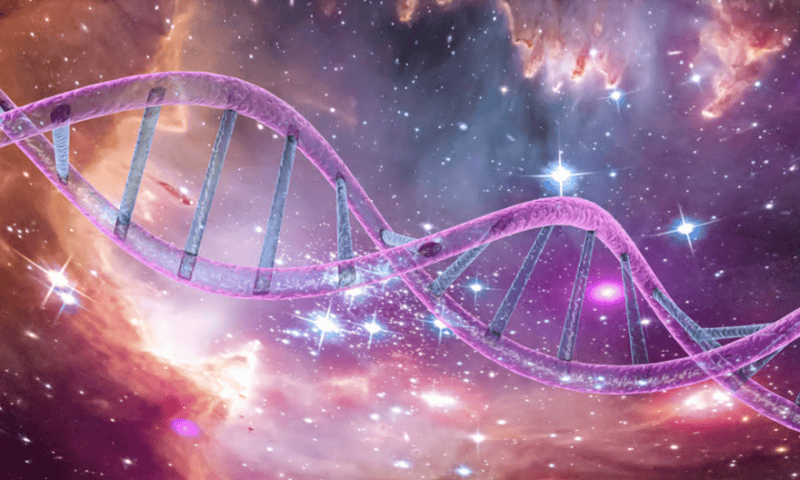In 1933, geneticist Thomas Hunt Morgan won the Nobel Prize in Physiology or Medicine for demonstrating that genes exist on chromosomes, which are passed down from parent to offspring. Ninety-one years later, researchers at Columbia University—the same school where Morgan conducted his award-winning fruit fly research—have found a gene that violates this cardinal rule.
Neo is a free-floating, ephemeral gene that is made by bacteria only when they are infected by a virus. The technique the cells use to make neo, if widespread across the tree of life, could usher in a new way of thinking about genes and genomes.
“It’s a mind-blowing discovery,” Aude Bernheim, Ph.D., a microbiologist at the Pasteur Institute in Paris who was not involved with the research, told Fierce Biotech in an email. “It questions our vision of the central dogma and how genetic information is encoded.”
Samuel Sternberg, Ph.D., has been interested in methods to edit, splice, and integrate DNA since earning his doctorate with CRISPR pioneer Jennifer Doudna, Ph.D. After starting his own lab at Columbia, Sternberg became increasingly interested in so-called retroelements, genetic material that is inserted into a genome after being reverse-transcribed from RNA by an enzyme called a reverse transcriptase.
A well-known example is HIV, which uses reverse transcription to insert its DNA into host genomes. This flaunts what’s known as the central dogma of molecular biology—that DNA in genes is transcribed into RNA, which is then translated into proteins.
When Stephen Tang joined the lab as a graduate student, Sternberg gave him a broad assignment. “The pitch, really, when I started my Ph.D., was go find something interesting about retroelements,” Tang told Fierce in a joint interview with Sternberg.
“And since it was that broad of a pitch, it seems like the most interesting thing would be in something that the field knew nothing about.”
He decided to look into a poorly studied group of reverse transcriptases in bacteria, fittingly called the Unknown Group, which had recently been implicated in defense systems against viral infections.
To figure out what these defense-associated reverse transcriptases (DRTs) are doing, Tang needed to catch them in the act. He burst open cells of the bacteria Klebsiella pneumoniae and targeted a known DRT enzyme, KpnDRT2, with a tag protein that allowed him to separate the reverse transcriptase from other cell contents, as if he’d glued a magnet onto them. Because reverse transcriptases create new DNA from an RNA template, both molecules were bound to the tagged KpnDRT2, and Tang could sequence them to figure out what the enzyme was making.
“The most surprising thing that we noticed was that if you took this piece of DNA and looked closely at the sequence, you would see all of the necessary components for a gene,” Tang said.
This gene, called neo, in turn is translated into a protein that defends the cell against viruses (Tang and Sternberg aren’t sure how yet). Neo exists only in this free-floating form, not in the genome; even if you sequenced every single bit of DNA in the bacteria’s genome, you wouldn’t ever find neo or any sign of the protein it creates.
“The cell makes a proto-version of the gene all the time,” Sternberg said. “But it’s only upon infection by the virus that it makes the full form, that makes it double-stranded, and then everything kicks off.”
Oddly, the reverse transcriptase that makes neo can somehow jump from the end of the RNA template back to the beginning, repeating the process over and over again. This means that neo, and the protein that it makes, can come in a variety of sizes—potentially even challenging the recently crowned largest protein ever.
“We know of more than a hundred antiphage systems now, and we believe there are thousands out there to discover and characterize,” Bernheim said. “Each of these systems could encode an original and/or novel molecular mechanism such as this one.”
Tang has since found evidence for neo-like genes in other bacteria, but how widespread this phenomenon is remains to be seen. “We’re really fascinated with this idea that we might find other ephemeral genes in other contexts by using the tricks and the approaches that [Tang] developed,” Sternberg said.
Reverse transcriptases are common across the tree of life, including in humans. Who knows how many of them might be making ephemeral genes too?
“The fundamental question is, how much of a general rule of biology is this phenomenon?” Tang said. “Is this a one-off, amazing instance of this happening? Or could we rethink all of the fundamental principles of biology based on this discovery?”

